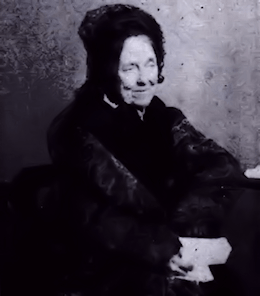Textus Receptus Bibles
Julia E. Smith Translation 1876
| 3:1 | And Solomon will begin to build the house of Jehovah in Jerusalem in mount Moriah, which was seen to David his father in the place which David prepared in the threshing-floor of Ornan the Jebusite. |
| 3:2 | And he will begin to build in the second month, in the second, and in the fourth year to his kingdom. |
| 3:3 | And these Solomon founded to build the house of God. The length of cubits in the first measure, sixty cubits, and the breadth twenty cubits. |
| 3:4 | And the porch which was upon the face of the length, upon the face of the breadth, twenty cubits, and its height, a hundred and twenty: and he will overlay it from within with pure gold. |
| 3:5 | And the great house he covered with woods of cypresses, and he will cover it with good gold, and he will bring up palm trees upon it and chains. |
| 3:6 | And he will overlay the house with precious stone for glory: and the gold, gold of Parvaim. |
| 3:7 | And he will cover the house, the beams, the thresholds, and its walls, and its doors, with gold; and he engraved Cherubims upon the walls. |
| 3:8 | And he will make the house of the holy of holies, its length upon the face of the breadth of the house, twenty cubits, and its breadth twenty cubits: and he will cover it with good gold to six hundred talents. |
| 3:9 | And the weight to the nails to fifty shekels of gold. And the upper chambers he covered with gold. |
| 3:10 | And in the house of the holy of holies he will make two cherubims, a work of sculptures, and he will overlay them with gold. |
| 3:11 | And the wings of the cherubims their length, twenty cubits: the one wing to five cubits, reaching to the wall of the house: and the wing of the other, five cubits, reaching to the wing of the other cherub. |
| 3:12 | And the wing of the other cherub, five cubits, reaching to the wall of the house: and the other wing five cubits, cleaving to the wing of the other cherub. |
| 3:13 | The wings of these cherubims spreading twenty cubits: and they standing upon their feet, and their faces to the house. |
| 3:14 | And he will make the vail of cerulean purple, and purple, and crimson, and byssus, and he will bring up cherubims upon it. |
| 3:15 | And he will make before the house two pillars of thirty and five cubits the length, and the capital which was upon its head, five cubits. |
| 3:16 | And he will make chains, in the oracle, and give upon the head of the pillars; and he will make a hundred pomegranates and give upon the chains. |
| 3:17 | And he will set up the pillars upon the face of the temple, one from the right, and one from the left; and he will call the name of the right, Jachin, and the name of the left, Boaz. |

Julia E. Smith Translation 1876
The Julia Evelina Smith Parker Translation is considered the first complete translation of the Bible into English by a woman. The Bible was titled The Holy Bible: Containing the Old and New Testaments; Translated Literally from the Original Tongues, and was published in 1876.
Julia Smith, of Glastonbury, Connecticut had a working knowledge of Latin, Greek and Hebrew. Her father had been a Congregationalist minister before he became a lawyer. Having read the Bible in its original languages, she set about creating her own translation, which she completed in 1855, after a number of drafts. The work is a strictly literal rendering, always translating a Greek or Hebrew word with the same word wherever possible. Smith accomplished this work on her own in the span of eight years (1847 to 1855). She had sought out no help in the venture, even writing, "I do not see that anybody can know more about it than I do." Smith's insistence on complete literalness, plus an effort to translate each original word with the same English word, combined with an odd notion of Hebrew tenses (often translating the Hebrew imperfect tense with the English future) results in a translation that is mechanical and often nonsensical. However, such a translation if overly literal might be valuable to consult in checking the meaning of some individual verse. One notable feature of this translation was the prominent use of the Divine Name, Jehovah, throughout the Old Testament of this Bible version.
In 1876, at 84 years of age some 21 years after completing her work, she finally sought publication. The publication costs ($4,000) were personally funded by Julia and her sister Abby Smith. The 1,000 copies printed were offered for $2.50 each, but her household auction in 1884 sold about 50 remaining copies.
The translation fell into obscurity as it was for the most part too literal and lacked any flow. For example, Jer. 22:23 was given as follows: "Thou dwelling in Lebanon, building as nest in the cedars, how being compassionated in pangs coming to thee the pain as in her bringing forth." However, the translation was the only Contemporary English translation out of the original languages available to English readers until the publication of The British Revised Version in 1881-1894.(The New testament was published in 1881, the Old in 1884, and the Apocrypha in 1894.) This makes it an invaluable Bible for its period.